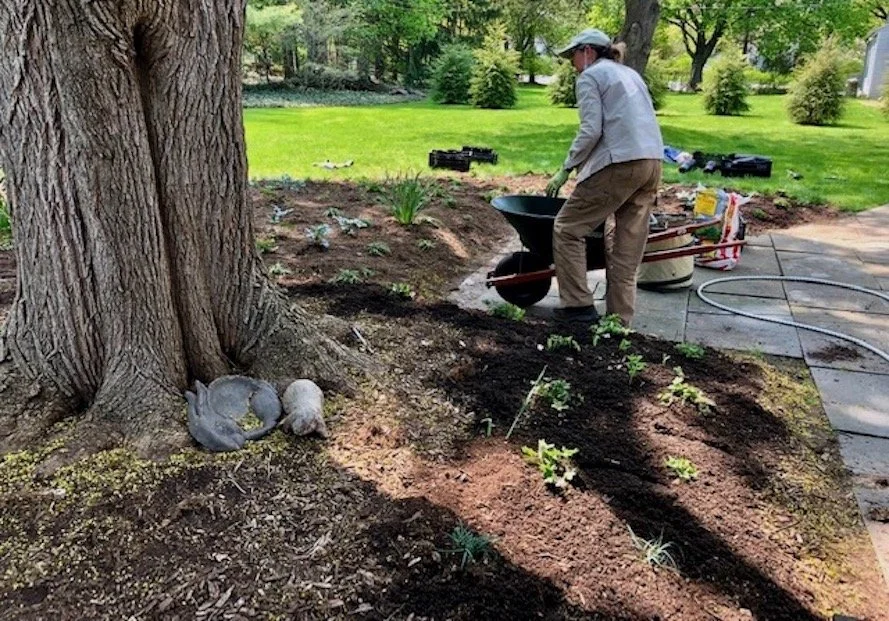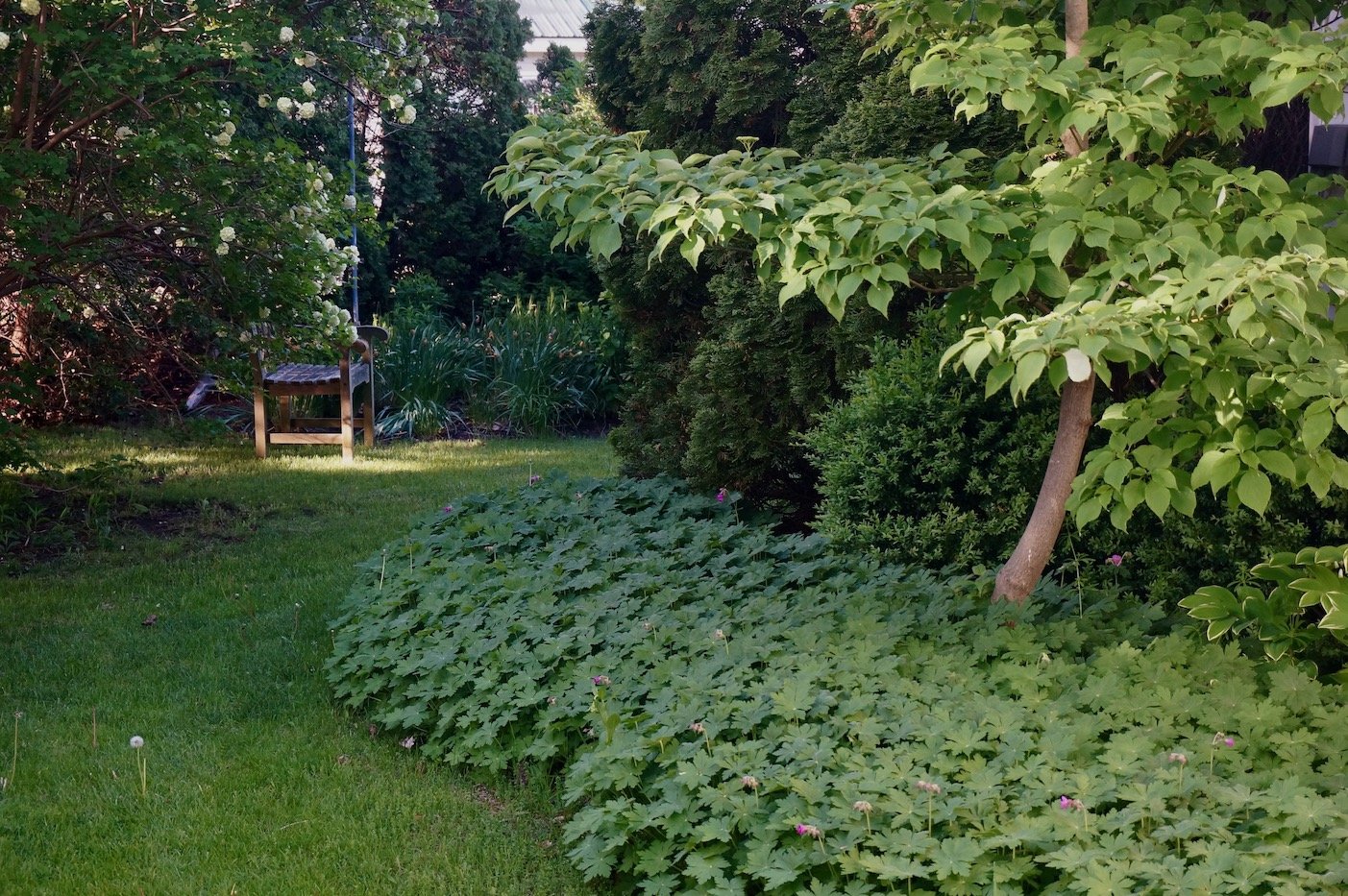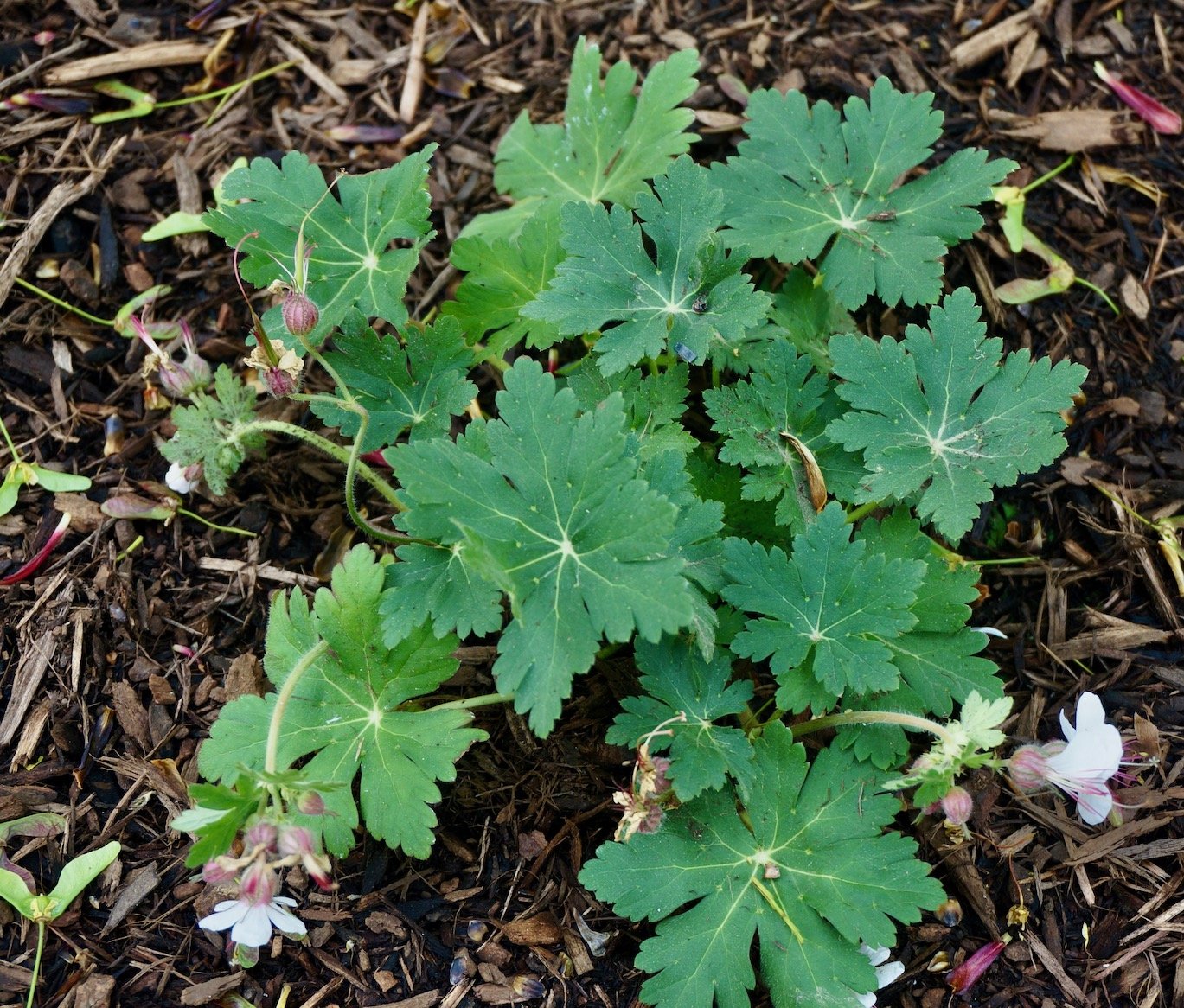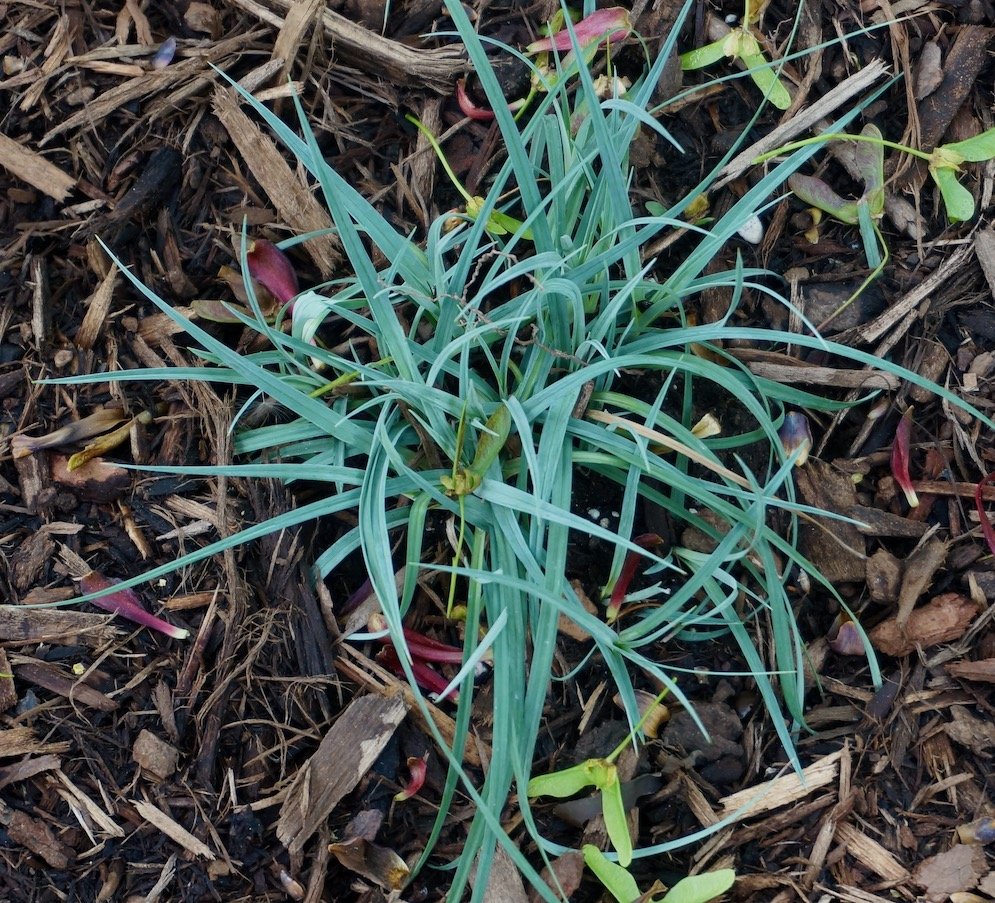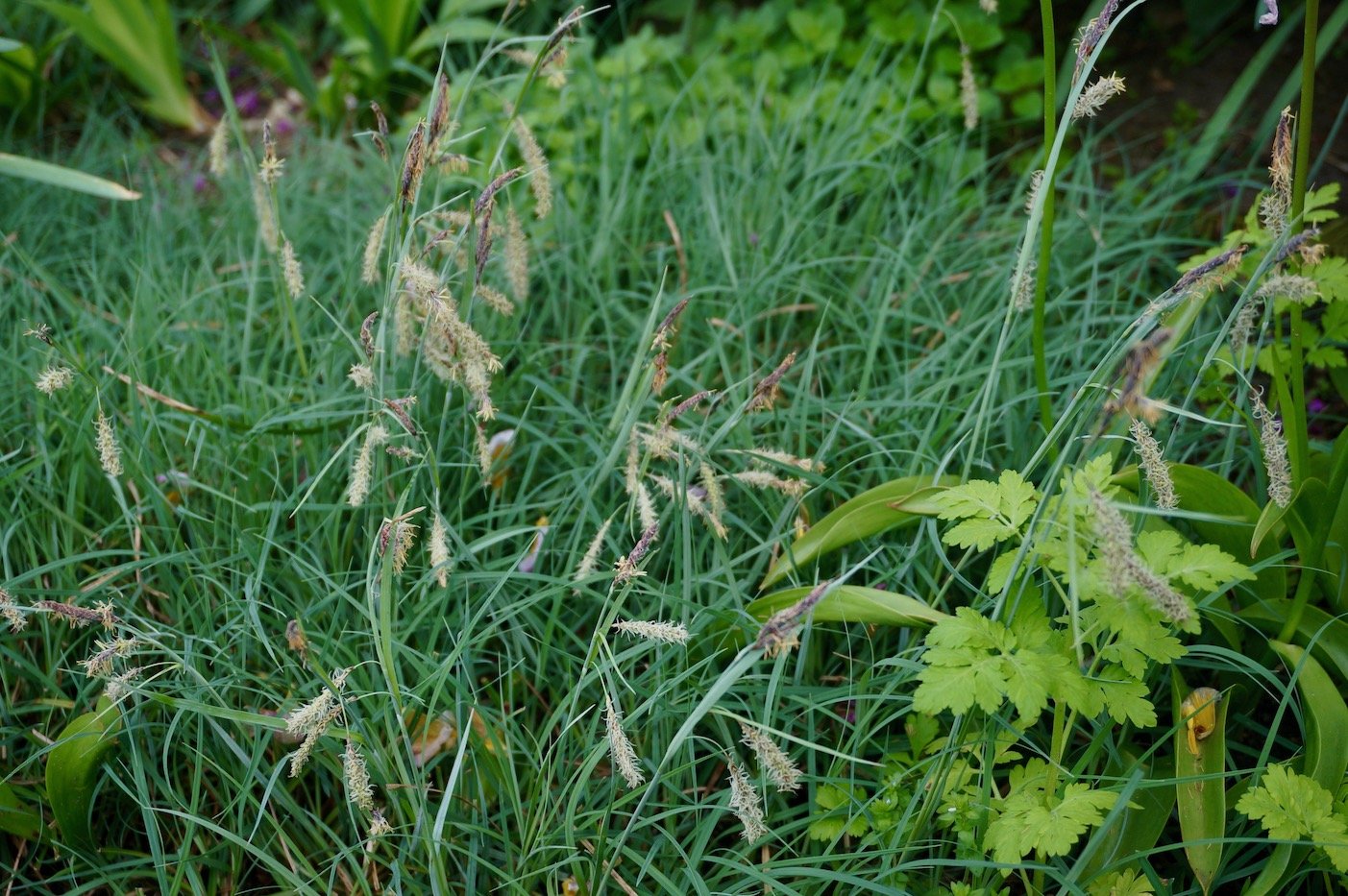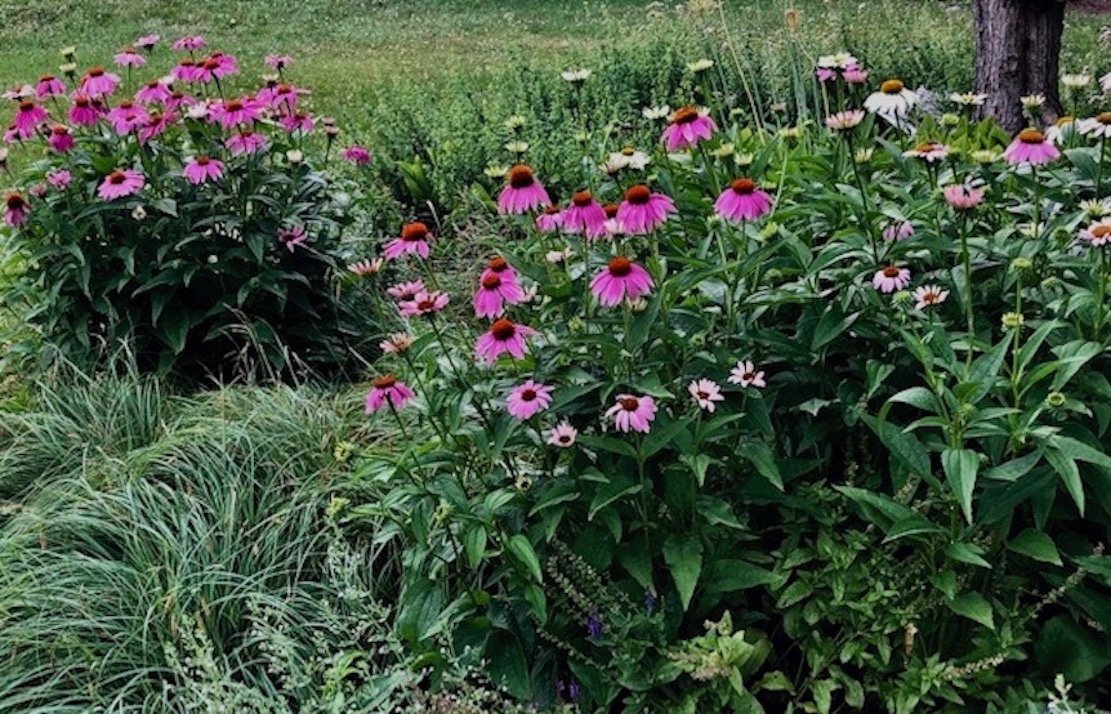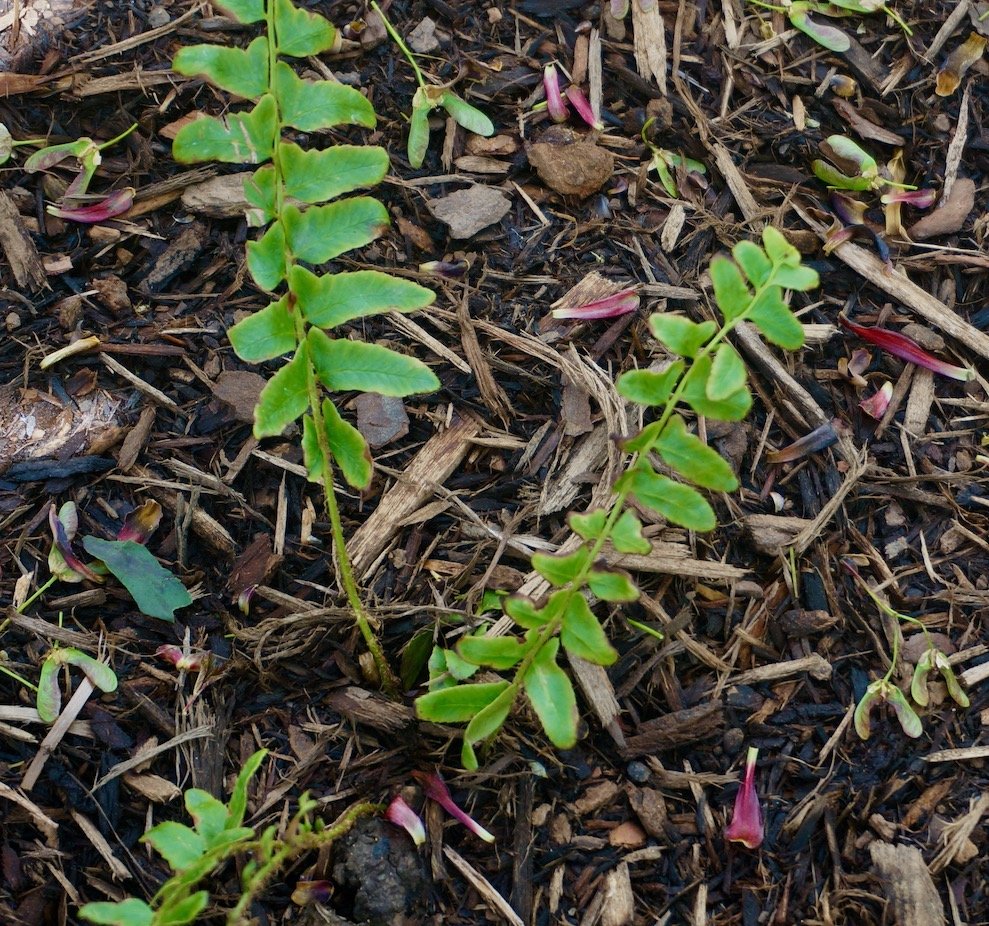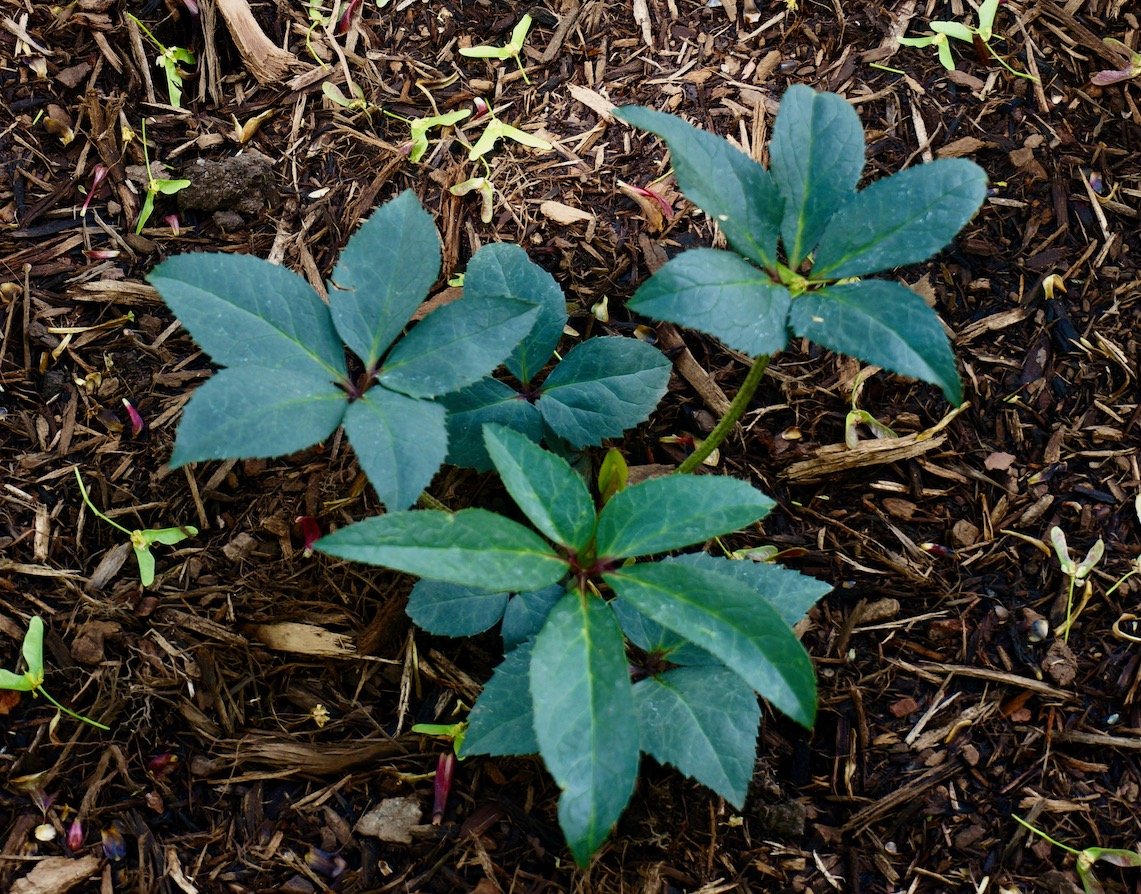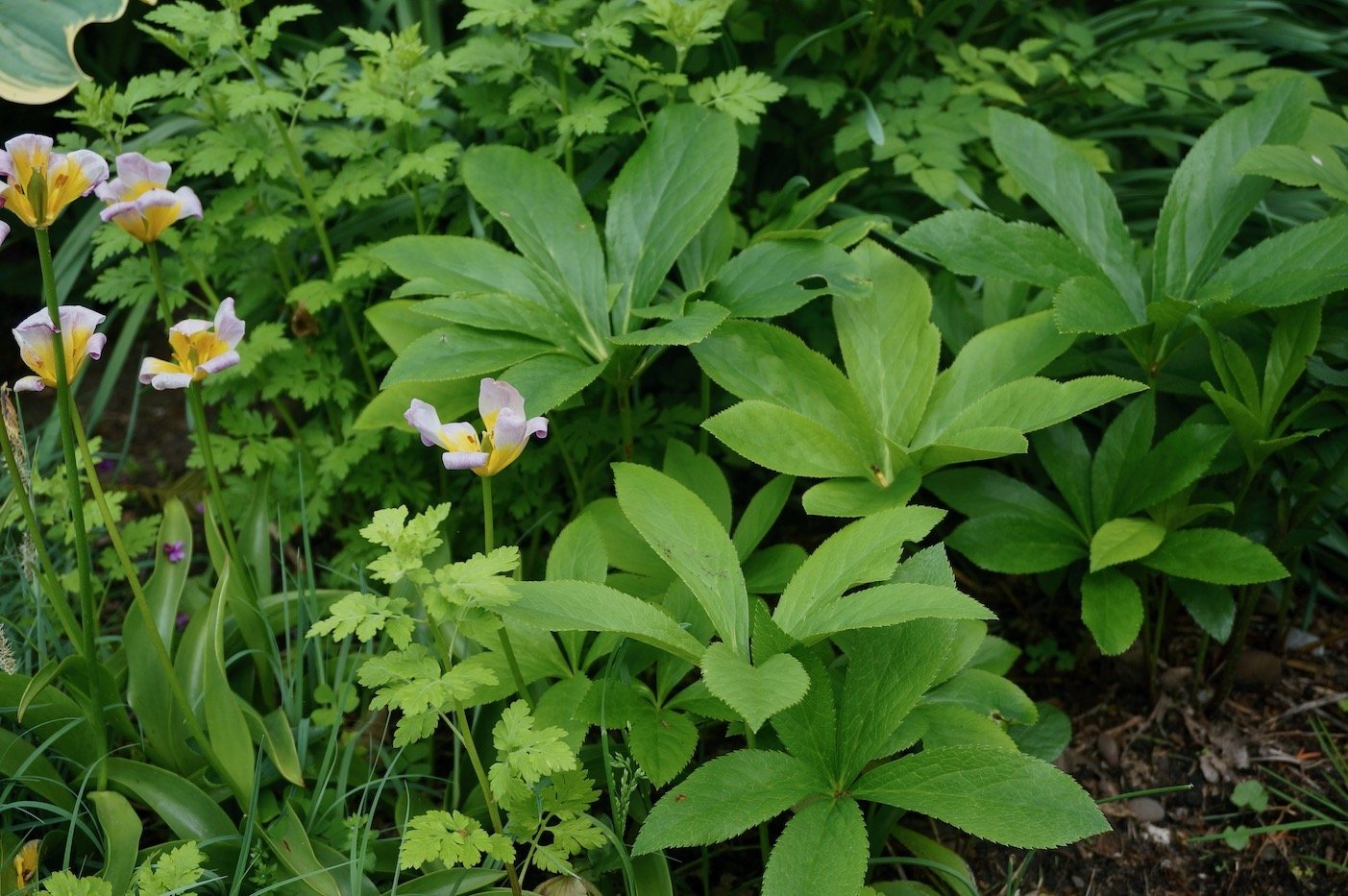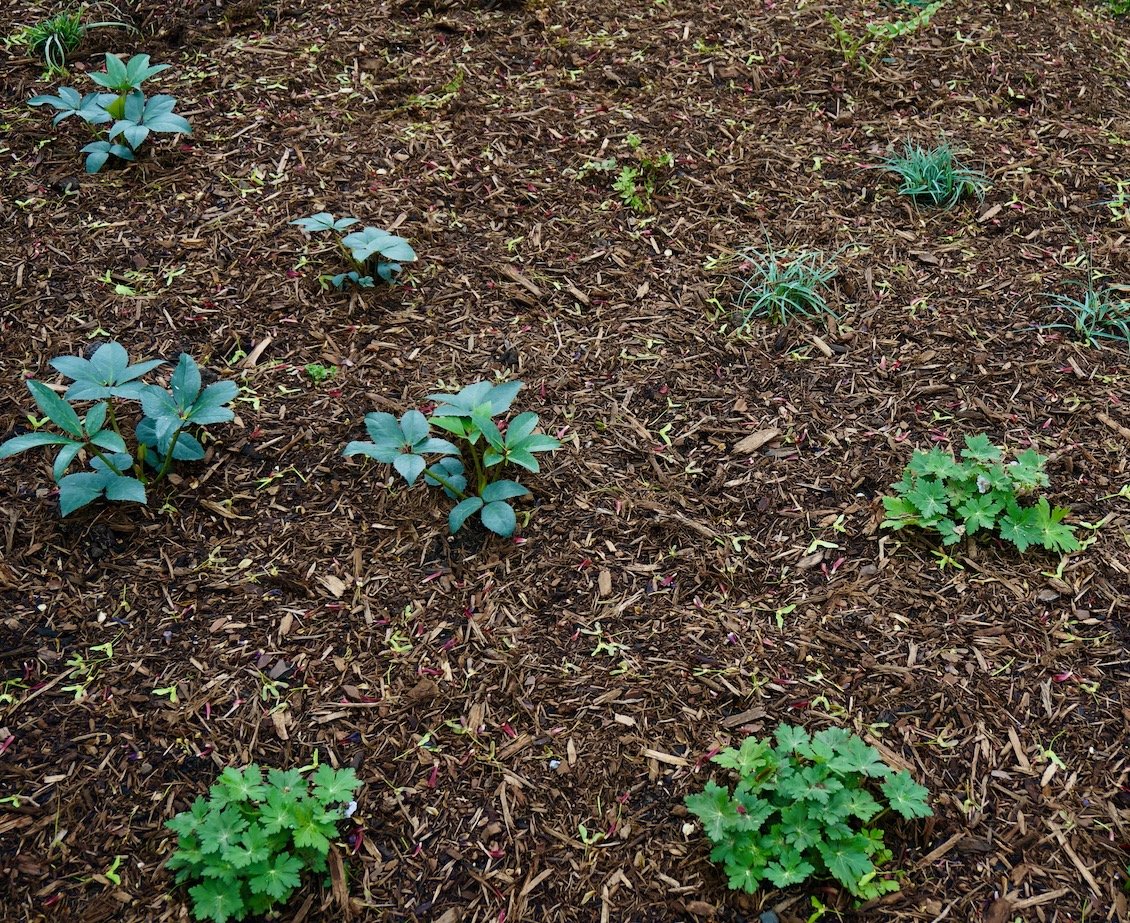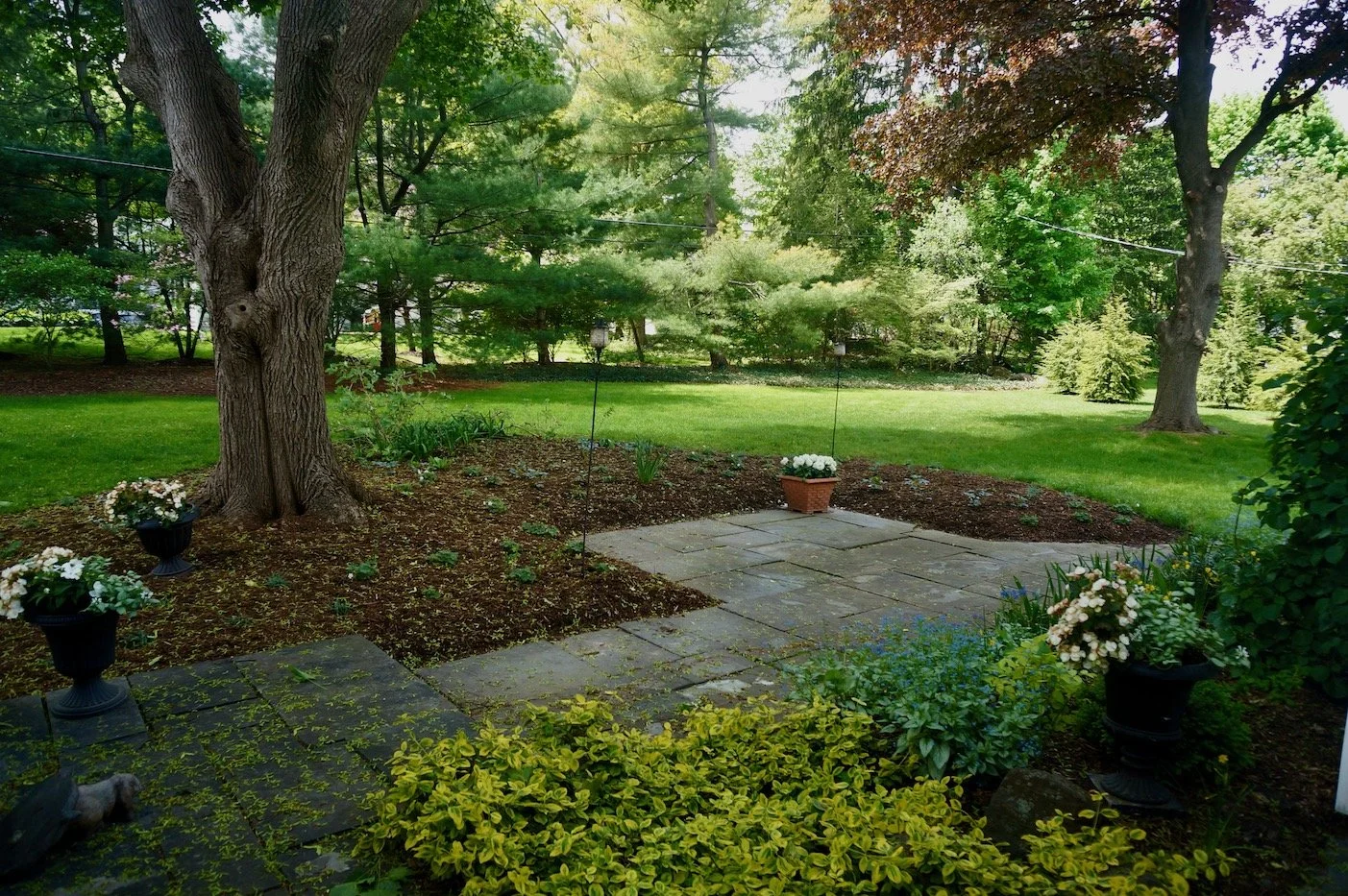Got deer, roots and shade? Jazz it up with these 4 great perennials
A few month’s ago, I presented a lecture to a bunch of avid horticulturists titled Imperfectly Perfect - How To Garden In Impossible Spots. Afterwards, a lively discussion about various gardening nightmares ensued and the subject of planting underneath trees - in particular maples, came up. What can you plant that will survive? It’s surely a vexing question. Choices are limited by harsh facts - shady location, shallow feeder roots that eat up most of the available soil and obviously, you don’t want to damage the tree by severing large tap roots when you dig.
So I thought I’d share my latest planting saga, in hopes that some of you might find it useful. When asked to come up with an idea for planting underneath the well established maple in the photo below, I knew it was going to be tough going.
Before I embarked upon a plan, I did a little preliminary digging to see what I had to work with. Surprisingly, I encountered a few decent pockets of soil between the major roots. Farther out from the tree was rooty, but not impossible. Forget about planting closer to the base of the tree - I couldn’t even get a shovel in the ground.
I made a list of shallow rooted shade lovers that could tolerate such conditions and would spread over the areas I couldn’t plant in. Then I pared it down even more - yes folks, there were deer to contend with as well.
The key to planting in situations like this is to select plants that tolerate dry conditions, are shallow rooted and spread quickly. I chose a palette of plants I had used successfully in previous experimentations. Surprisingly, there are a fair number that will flourish - Sweet woodruff (Galium odoratum), European ginger (Asarum europeum) Epimedium, Vinca minor and Hosta are several that come to mind. However, I limited this planting to 4 deer proof perennials that would provide interesting textures as well as flowers. Here’s what I used.
The Plants:
Geranium macrorrhizum: My secret weapon for truly terrible spots. Here’s why - this perennial ground cover has shallow spreading roots that creep along the top inch of the soil, it tolerates drought and flashes hot pink flowers at the end of May. These were planted in the most root ridden areas where I knew nothing else would grow.
Below, Geranium macrorrizum ‘Bevans Beauty’ is in full tilt. I will admit that this is a perennial that likes to take over the show, but it’s easy to pull out. The leaves emit a pungent scent so the deer leave it alone.
If you’re not into bright pink, here’s one that’s almost white - Geranium macrorrhizum ‘Spessart.’ I chose this variety for my planting because I wanted a combination of green, white and gray.
Geranium macrorrhizum ‘Spessart’
2. Carex flacca: Some Carex varieties are useful in spots where you need shallow rooted plants. They don’t all tolerate dry soils but Carex flacca is one that does. It stands up well in light shade and spreads rhizomatously, covering a lot of territory quickly once it’s established. I recommend planting it next to other rambunctious spreaders (such as the geranium) that can hold their own. Again, this was added to the most root ridden spots. It’s not flashy on it’s own, but striking when planted in masses. I added it to create texture and movement.
Here it is in one of my semi shade borders - not quite as vibrant as it would be in the sun, but pretty darn attractive.
Here it is in the full sun weaving through a bed of Echinaceas. You can’t beat that soft silvery foliage!
3. Polystichum acrostichoides aka Christmas fern: These need a little more moisture, so they were placed in deeper pockets of soil between major roots of the tree. After all, you see these ferns growing between rocks and carpeting forest floors, so why wouldn’t they work underneath a maple tree? Christmas ferns grow more slowly than Carex and Geranium but well worth waiting for. Once established, they provide a crisp dark green backdrop for the other perennials.
4. Helleborus orientalis - aka Hellebore, Lenten Rose: This spring bloomer has a lot going for it. Not only is this perennial deer proof, it’s shallow rooted and performs well in dry soils. I chose it for the shiny dark green foliage. Like the Christmas fern, it remains attractive through late fall.
Hellebores are available in a variety of colors, both double and single flowering. In keeping with the green, white and gray theme, I chose a double white, “Wedding Bells.’
Here it is (not blooming yet) in one of my shady borders.
Planting:
I roughed up the soil as much as possible without damaging big roots and raked out small feeder roots before we planted. Because there was so little good soil, I enriched each hole with hefty doses of compost. I strongly recommend a sharp pointed shovel like the one you see below. In situations like this, you literally have to carve out holes as you go. Before choosing your plants, do some experimental digging and make your list according to the conditions.
My favorite soil builder - Bumper Crop
I spaced the plants about a foot and a half apart and massed varieties together in groups of 5, 7, 9 and so on for impact. Survival rates are much better if you use small plants because they have a chance to establish a strong root system before they have to duke it out with surrounding roots. I used in quart sized pots, plugs would work well too if you pay extra careful attention to watering.
At the end of the day, we won. Score - gardeners 10, roots 5.

